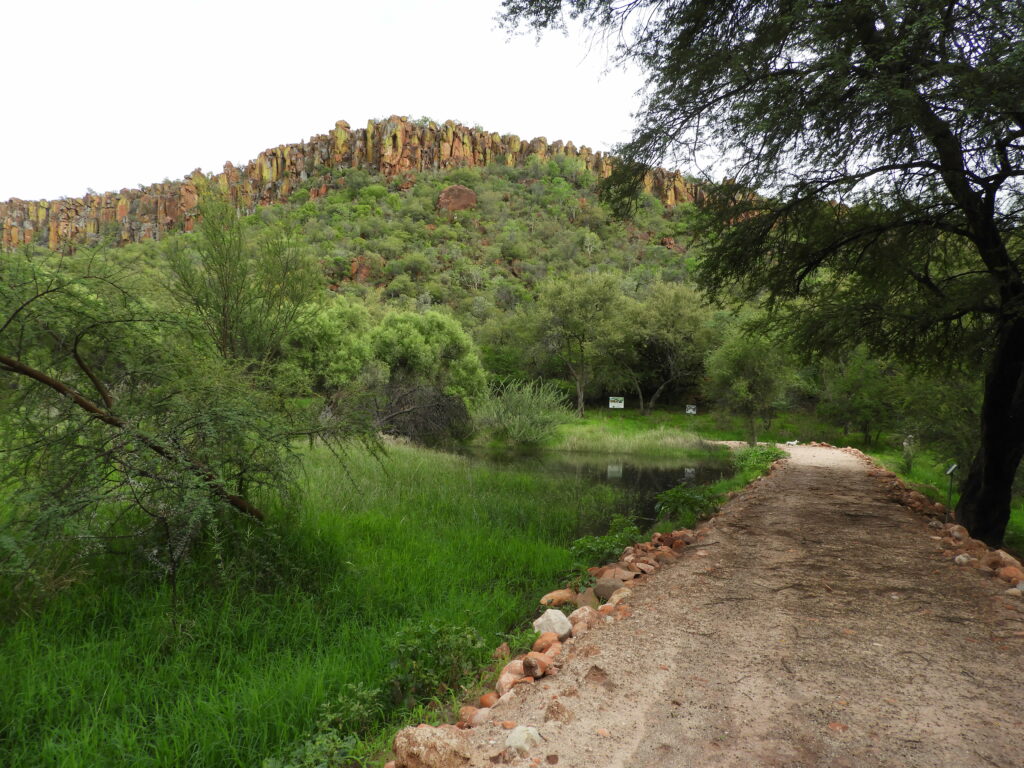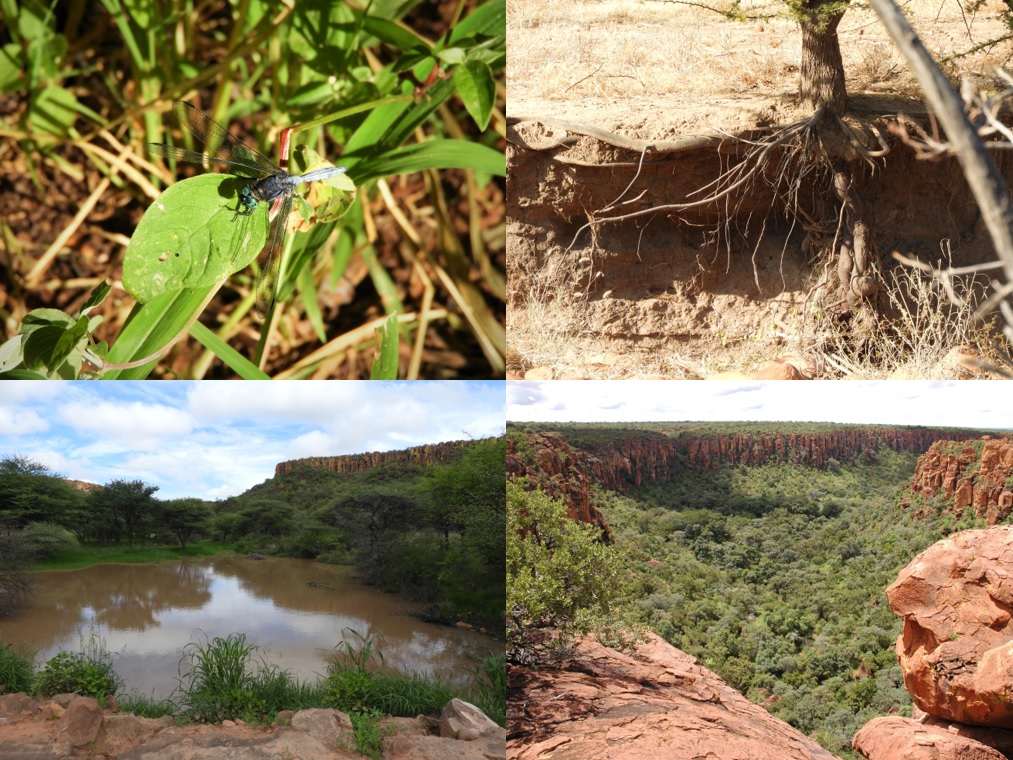Combating erosion at the Waterberg Wilderness valley and dragonflies as indicators for a healthy freshwater ecosystem.
If dragonflies are absent from a water body, the potential issues may be water contamination due to pesticides, excessive nutrients from agriculture or general pollution caused by human settlements. Another issue is erosion and the siltation of soil, herby destroying the vegetation of the aquatic environments. At Waterberg Wilderness, bank erosion poses a threat to the soft soil of the valley.
A broad conservation plan
Waterberg Wilderness is following a conservation plan to combat erosion. The water in the lodges comes from the spring at the end of the valley. It was analyzed and found to be of excellent drinking quality. Care is taken not to use more than half of the spring water, so that enough is left for the resident plants and animals.
Since there is enough water available all year long, alien plants thrive. Above all, the popular ornamental plant spanish flag (Lantana camara) spreads rapidly and takes over – if one allows it. The overpopulation of the spanish flag leads to other plants no longer being able to establish themselves. This has devastating consequences for the soil, as it lacks the necessary support and shelter of other ground covering shrubs and grasses. Over the past twenty years this invasive plant was systematically removed by hand, allowing the vegetation to diversify and grow a more effective soil cover.
Habitat for dragonflies
The deeper the erosion gets, the quicker the water flows off, worsening the destruction of the soil. To prevent the water from running off too quickly, small dams were built along the valley. These are now forming small ponds, which evolved into a unique habitat for plants, birds and insects. A side effect is, that the groundwater is filled up effectively. This again leads to better chances for a lush vegetation. Win-Win.
The presence of dragonflies at these ponds implies a good water quality. The insects are sensitive to environmental changes and require clean water to thrive. Their survival also requires a healthy vegetation to provide shelter for them to hide during their transformation process from nymphs to adult fliers. That’s why we are always happy when we see a dragonfly in the valley.
You can explore this paradise on the many nature trails offered at Waterberg Wilderness. And maybe you will also see one of the nearly 150 species of dragonflies that can be found in Namibia (over 5000 worldwide).

#projectdragonfly – a unique habitat in the Waterberg Wilderness valley




